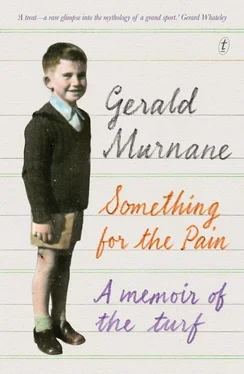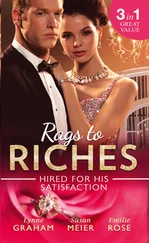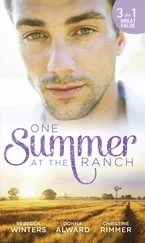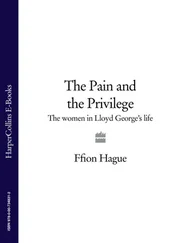Dover Street, Flemington, was unknown to me in the 1950s and I would have had no access for some years to a street directory that could have told me the whereabouts of Taylor’s stables. I’ve written earlier about what I think of as Old Flemington. Dover Street is very much a part of Old Flemington. Taylor almost certainly lived in a plain-looking weatherboard house with six or eight horseboxes in the backyard. I can see the yard now. On a wet day, the bluestone paving is sloppy with horse dung. On a hot day, the air is full of yellow chaff specks. A drooping pepper tree completes the image.
In the brief newspaper report of the level-crossing smash, the information about Rupe Taylor was followed by a single sentence: Also killed in the crash was Mary Christian Murday of the same address .
Nowadays, of course, people live with their partners or with their fiancés or fiancées, or their boyfriends or girlfriends, or they simply live together. For the umpteenth time in this book, I have to remind the younger reader that things were quite otherwise during the Great Age of Racing. Mary Murday was lucky not to have been described as the de facto wife of Rupe Taylor or as his common-law wife. A decade earlier, the newspaper report would have omitted the addresses of the dead couple so as not to offend a certain sort of reader by reminding him or her that some persons cohabited without benefit of clergy, to use another expression of long ago.
I was strangely affected by the few words that I read about Mary Christian Murday, and I’ve thought of her from time to time during the sixty years since. I mean that I’ve recalled the image that I formed long ago of a quiet grey-haired woman of no particular distinction: someone who would pass largely unnoticed on a racecourse. Nothing that I wrote in the previous sentence has any justification in fact. For all I know, Mary was a tall, overpowering woman who wore much make-up and large hats and had a loud, grating voice. And yet, I can never think of her in that way. If I had read that Mary was Rupe’s wife, I would have forgotten her and him a few months later and this book would have had one less section. But Mary and Rupe were not married. Two such persons nowadays would seem to me mere followers of fashion. It takes no special quality to be a follower of fashion — to live nowadays with your boyfriend or to have been sixty years ago a Sunday-school teacher insisting on a church wedding. Mary and Rupe followed no fashion. They acted, as a quaint old expression of my childhood would have put it, according to their lights. By doing so, they and a few others of their kind upended the fashions of their day as a few unknown and unknowing persons may eventually upend our own fashions, unthinkable as it seems to us.
For whatever reason, I found the courtship and marriage customs of my time cruel, even barbaric. Someone of my nature might say the same about the courtship and marriage customs of any age. Even so, I have sometimes wished I could have met up with Mary Christian Murday before her untimely death. I have sometimes supposed that Mary might have had a daughter of my own age. The young woman’s father would have been not Rupert Taylor but someone, almost certainly a racing man, who was now out of sight and mind. As a result of some unimaginable set of circumstances, I would have been visiting Rupert’s stables on an afternoon in spring, when the pepper tree was waving in the north wind. Mary, in her quiet way, would have introduced me to her daughter, who would have been by no means unlike her mother.
MY WIFE, AS I wrote earlier, took no interest in racing except when she was actually at a meeting. Then, she would become absorbed in the form guide. I considered her selection methods unsystematic and haphazard and was sometimes rude enough to tell her so, but Catherine had her share of successes. Towards the end of the previous century she began taking an interest in horses ridden by the young jockey Luke Nolen. She did this for no other reason than that Nolen was a cousin of one of her girlfriends from way back. If you follow any capable jockey, you’ll get your share of good-priced winners, and Nolen brought Catherine just enough success to justify her sticking with him.
Early in the present century, Nolen became the jockey of first choice for the up-and-coming trainer Peter Moody and Catherine’s strike rate, as they call it, improved considerably. She and I had been regular racegoers for fifteen years by then, and we could not have known that we had only two or three years left before she would be too frail to get to the races. During those two or three years, however, the combination of Moody and Nolen sent her home in a good mood on many a Saturday.
Catherine, who had been a heavy smoker for all of her adult life, was found to have untreatable metastatic cancer in May 2008. The cancer would have begun in one of her lungs at least a year before but had moved to a number of other parts of her before it was found. The young doctor who told this news to Catherine and me one afternoon in the Austin Hospital was flushed and trembling from nervousness. I guessed that the other members of the medical team treating Catherine had sent her to Catherine’s bedside as a sort of learning experience. I wonder what the doctor had been expecting. I wonder what she made of Catherine’s and my response to the news. Catherine said, quietly and almost to herself, ‘So, I’ll be dead soon…’ She sounded almost relieved. She had by then lost the use of a leg from nerve degeneration, possibly caused also by her heavy smoking. I said to her, calmly also, ‘Well, at least you’re not going to end up in a nursing home!’ We had been dreading this possibility for some time past.
No one would tell us what Catherine’s life expectancy was. She and I suspected that she had about four months after the first diagnosis, meaning that she should have died in September 2008. In fact, she lived for twice that length of time, and was in and out of hospital half a dozen times. When Catherine was first in hospital, the social worker predicted that my wife would have to spend the remainder of her life either in hospital or in a nursing home with special facilities for caring for the terminally ill. Catherine certainly spent much of her remaining time in hospital, but during the rest of the time she was at home, with me for her nurse. She had regular visits from palliative-care nurses, but mostly I did everything for her. Why wouldn’t I? I was fit and healthy myself, and I knew more about her medical history than any of her many doctors and nurses.
I kept a detailed diary of everything that happened to Catherine during her last eight months. I learned from that diary, after everything was over, that I had spoken during those months with more than thirty doctors and more than a hundred nurses. I’ve forgotten most of them by now, but when I last looked through my diary I did a rough tally and estimated that about a quarter of both the doctors and the nurses had seemed either lazy or incompetent. Two doctors and a few nurses seemed to be halfwits. At the other end of the scale, I met a few doctors and not a few nurses that I would have trusted with the care of my own life.
The best nurses were from the Royal District Nursing Service. Not one of them could be faulted. They visited Catherine every few days, not just to wash her but to check out numerous matters. Most of them said little to me or even to Catherine. One was an exception. While she was washing Catherine one day in the bathroom with the door closed, I thought I heard her, the nurse, telling Catherine something about the spiritual world. Afterwards, I asked the woman directly: had she been preaching some kind of sermon to my wife?
Читать дальше












